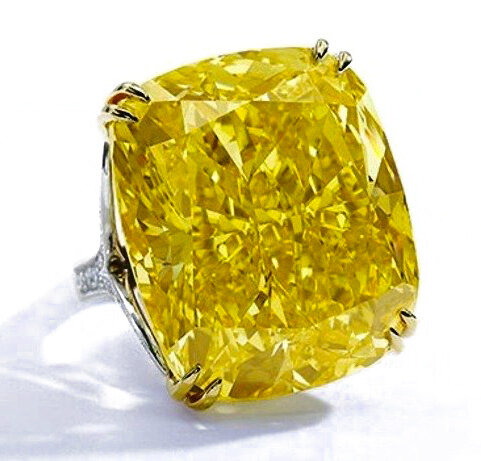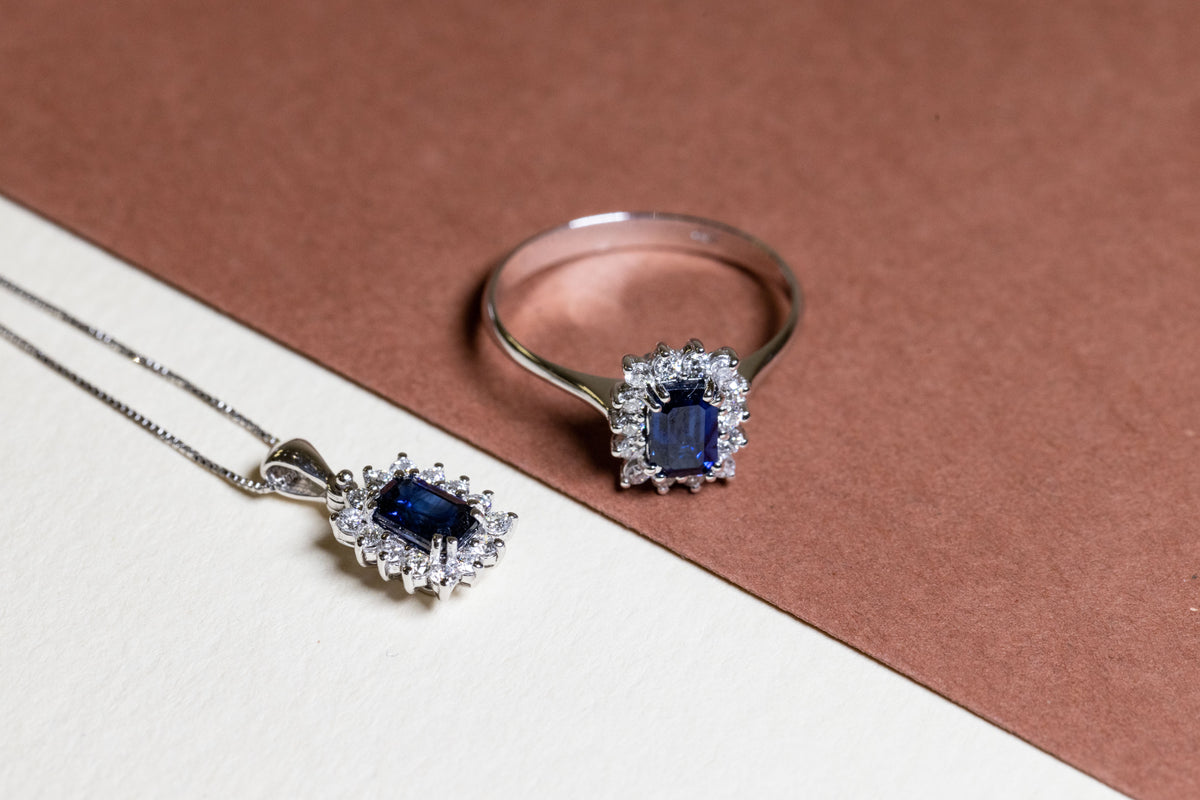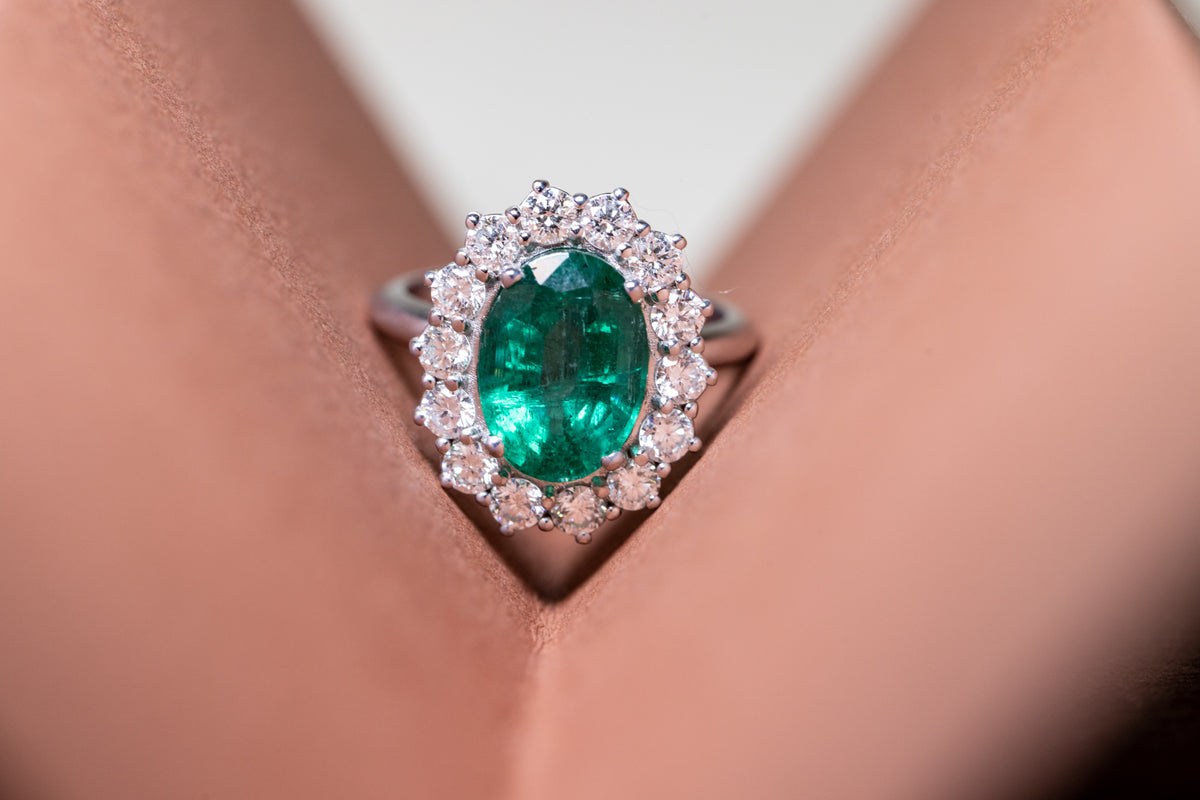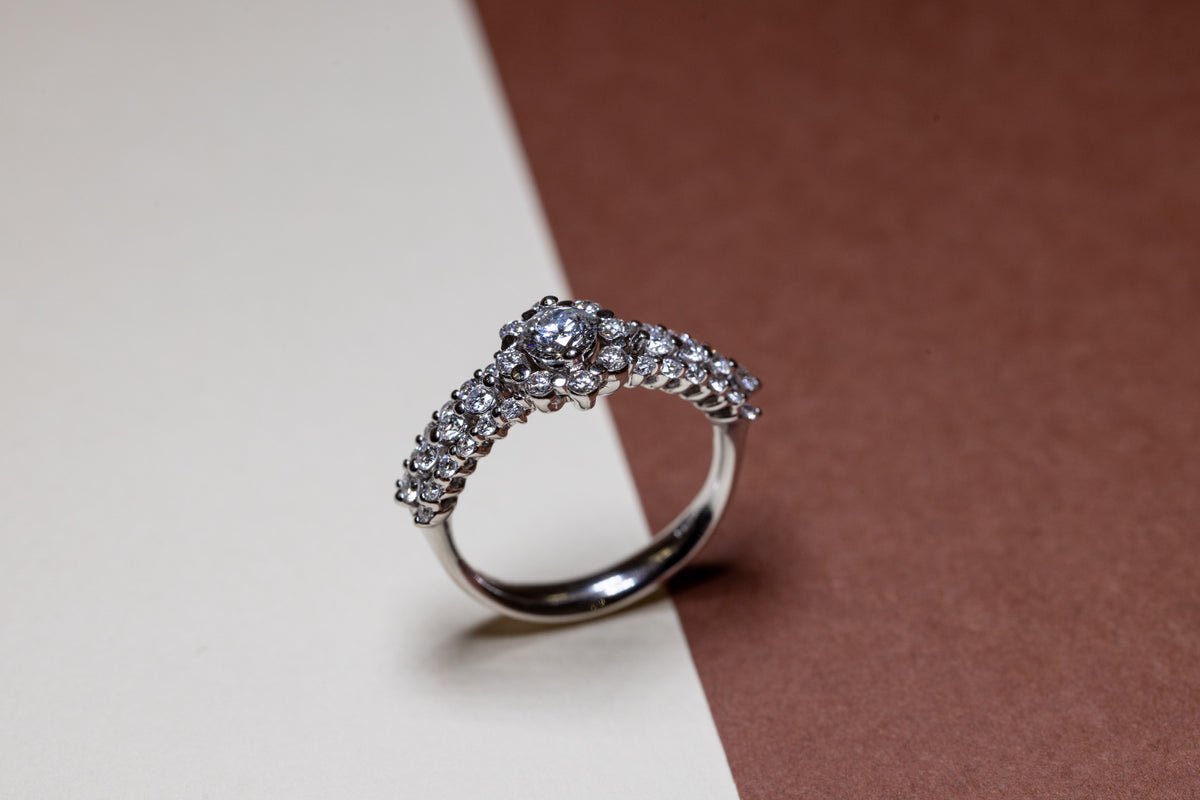Pay in installments with
Yellow diamonds are the subject of an interesting dichotomy: they are much more common than other fancy diamonds (pink, red, orange, blue, purple, and green) but relatively rare compared to colorless diamonds.
The cause of the yellow coloration is generally attributable to the presence of nitrogen atoms in the crystal lattice which replace, in aggregates or individually, carbon atoms.
Yellow diamonds come from various deposits around the world with a predominance of South Africa for the larger rough diamonds.
Color
The fundamental difference between colorless diamonds and fancy diamonds is that, for the former, the judgment on the color is based on the absence of color while, for the latter, it is based on the presence of color .
To establish the color grade of colorless diamonds, the DZ scale is used, in which the letter D represents absolute colorlessness (exceptional white) and the subsequent letters, up to Z (light yellow), are associated with a progressive increase in yellow saturation (and a corresponding decrease in value). In particular, the yellow saturation included in the KM, NR, and SZ intervals corresponds, respectively, to the degrees “faint yellow”, “very light yellow” and “light yellow”.
After the letter Z (exclusively for the yellow color) we enter the field of fancy diamonds, where the first grade, fancy light, is assigned to the lowest intensity of the color, followed by the subsequent grades, with increasing intensity, fancy, fancy intense, fancy vivid, fancy deep, fancy dark; the most appreciated and expensive is the “fancy vivid”.
This evaluation system was developed by the GIA ( Gemological Institute of America ) and is based on the joint judgment of two parameters:
- Saturation: the intensity of the color;
- Tone: the amount of light present in the color (brightness/darkness);

In certificates issued by GIA, the color grade is expressed first, followed by the secondary color (or shade) and, lastly, the primary color ( Hue : the actual color). For example, a “Fancy Vivid Orange Yellow Diamond” is a yellow diamond with an orange hue, whose color intensity grade is “fancy vivid”.
Finally, a rating is also given to the distribution of colour on the body of the stone: uniform ( Even ) or irregular ( Uneven ).
Trade names such as “ canary ” or “ zimmy ” are also used to describe yellow diamonds. Both refer to a very rich and intense shade of yellow with no secondary colors ( fancy intense yellow or fancy vivid yellow ) but “ zimmy ” is used to indicate yellow diamonds from the Sierra Leone deposit of the same name that have an extraordinary vividness.
Cut
For yellow diamonds, as for other fancy diamonds, the most important (almost exclusive) element to determine the value is the color, leaving aside (almost) completely the other elements, such as the purity and the cut that, for colorless diamonds, contribute, instead, equally to the color to determine the value (see Rapaport ). The cut proportions, the respect of which allows to enhance to the maximum the brilliance and the dispersion of the colorless diamond, in the fancy diamond can also be sacrificed to favor the intensity of the color (for example, through a deeper pavilion).

In choosing the shape, the color is still the determining factor and, therefore, fancy shapes are preferred which, compared to the classic round cut, have two advantages: (a) they allow less waste of the rough and, therefore, to conserve most of the initial carat weight (in the round cut, approximately 50% of the rough is eliminated) (b) they are more suited to enhancing the “apparent” color of the stone. In fact, for fancy diamonds, the color is judged by observing the stone from the table (“ face-up color ”), therefore perceiving the apparent color rather than the actual color (“ body color ”) as instead happens for the assignment of the color grade to colorless diamonds (whose color is evaluated by positioning the stone with the table upside down).
Purity
Unlike other fancy diamonds which, due to their extreme rarity, also come in very small sizes, yellow diamonds tend to be larger. This means that cutters can obtain diamonds with higher purity levels by eliminating the parts with the greatest number of inclusions from the rough. The consequence is that, although for all fancy diamonds the predominant (and almost exclusive) evaluation criterion is color, the relatively widespread diffusion of yellow diamonds with a good level of purity means that greater attention must be paid to this aspect in the evaluation process. This possibility is precluded for all other fancy diamonds, as demonstrated by the million-dollar sales of fancy diamonds with a low level of purity.
Values
Fancy diamonds make up only 0.0001% of all diamonds mined but, as mentioned, in this select category, yellows (and browns) are the most common.
In the fancy diamond category, therefore, yellow diamonds (along with brown ones) have more accessible prices and, in some cases (when the yellow color has a low saturation) they can even be cheaper than colorless diamonds with the same characteristics (clarity and carat). For example, a yellow diamond of “fancy” grade, “SI2” clarity and weight between 0.50ct and 0.69ct has a value of approximately between 2,000 and 3,000 dollars per carat. As the saturation of the yellow color progresses and the carat increases, the values tend to increase exponentially, reaching and exceeding the values of colorless diamonds. For example, a yellow diamond of “ fancy vivid ” grade, “IF” clarity , and carat weight in the range of 1.00 ct to 1.49 ct has a value of approximately $18,000 to $20,000 per carat, which is higher than a colorless diamond of the same characteristics and of D color (the highest color level).
To this consideration it must also be added that while the values of colourless diamonds have undergone insignificant increases in the last 10 years (on average, and for commercial carats, +15%), yellow diamonds have recorded very significant variations in the order of +90% (Source: FCFR – Fancy Color Research Foundation ).
In absolute terms, yellow diamonds remain far behind other fancy diamonds, which are much more expensive.
In absolute terms, yellow diamonds remain far behind other fancy diamonds, which are much more expensive.

GRAFF YELLOW (CT 100.09)
However, some yellow diamonds, with a great combination of color, clarity and carat weight, have sold for considerable sums, especially in recent years. In 2011, the Sun-Drop , the world’s largest pear-shaped yellow diamond (110.03 carats), sold for $10.9 million to an anonymous buyer. In 2014, the Graff Vivid Yellow , a 100.09-carat cushion-cut fancy vivid yellow diamond, sold for $16.3 million.
In 2018, another 20.49-carat, VVS1-clarity “ fancy vivid ” yellow diamond sold for $5.49 million (setting the record for the highest price per carat ever paid for a yellow diamond, $267.8k).
In addition to these very expensive and magnificent specimens, we also mention some of the well-known, historic and wonderful yellow diamonds.
The most famous yellow diamond in the world is certainly the Tiffany , a splendid specimen weighing 128.54 carats and with a cushion cut with 90 facets. The rough, which weighed 287.43 carats, was found in 1878 in a mine near Kimberley (South Africa) and was purchased by Charles Tiffany. It still belongs to the jewelry store of the same name and has only been worn by three women and in different settings: Sheldon Whitehouse in 1957 at the Tiffany Ball, Audrey Hepburn in 1961, in a publicity photo shoot for the film Breakfast at Tiffany's , and Lady Gaga , in 2019, at the Oscars ceremony where she won the statuette for "Best Original Song".


TIFFANY YELLOW (CT 128.54)

The third largest diamond in the world and the first with the highest level of clarity (“IF”) is the “ Incomparable ”, a magnificent 407.78 carat specimen, graded by the GIA as “fancy deep brownish yellow”. It comes from the largest rough ever mined in Congo (890 carats) and was found, in 1984, by a little girl playing in the dump of a diamond mine. It took 4 years to study the rough and carry out the cut. In 1988, the diamond was presented at auction with a starting price of 20 million dollars but was not awarded as the highest bid was 12 million dollars (at the time, the highest amount ever offered for a diamond).

INCOMPARABLE (CT 407.78)
Another noteworthy yellow diamond is the “ Allnatt Diamond ,” a stunning 101.29-carat, cushion-cut diamond certified by GIA as VS2 clarity and Fancy Vivid Yellow in color. It is named after Major Alfred Ernest Allnatt who purchased it in 1950 and commissioned Cartier to mount it.

ALLNATT (CT 101.29)
In 1996, the jewel, a magnificent flower-shaped brooch made of platinum and colorless diamonds, was sold at Christie's for just over $3 million. The SIBA Corporation, the current owner, recut the diamond (bringing it from the initial 102.07 carats to the current 101.29 carats), in order to obtain an improvement in the color grading which, in fact, went from “ Fancy Intense ” to “ Fancy Vivid ”.
Treatments
Yellow color in diamonds can also be induced artificially through irradiation (exposure of the diamond to neutron and electron radiation) or the high temperature/high pressure (“HTHP”) process. Determining the color origin (“ natural ” or “ treated ”) requires advanced analysis by gemological laboratories and is always reported under the heading “color origin” in the certificates that accompany fancy diamonds.



Receive your order immediately and pay in 3 to 12 installments.
Our team is always available to you 24/7.
We deliver all jewelry in Zahir personalized packaging.
Engrave a name, letter, or a date that's important to you, at no additional cost.